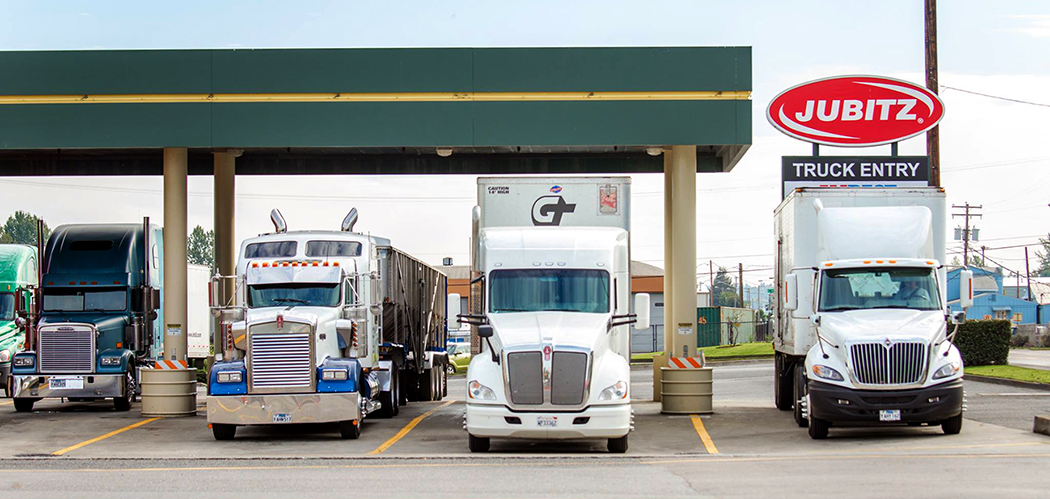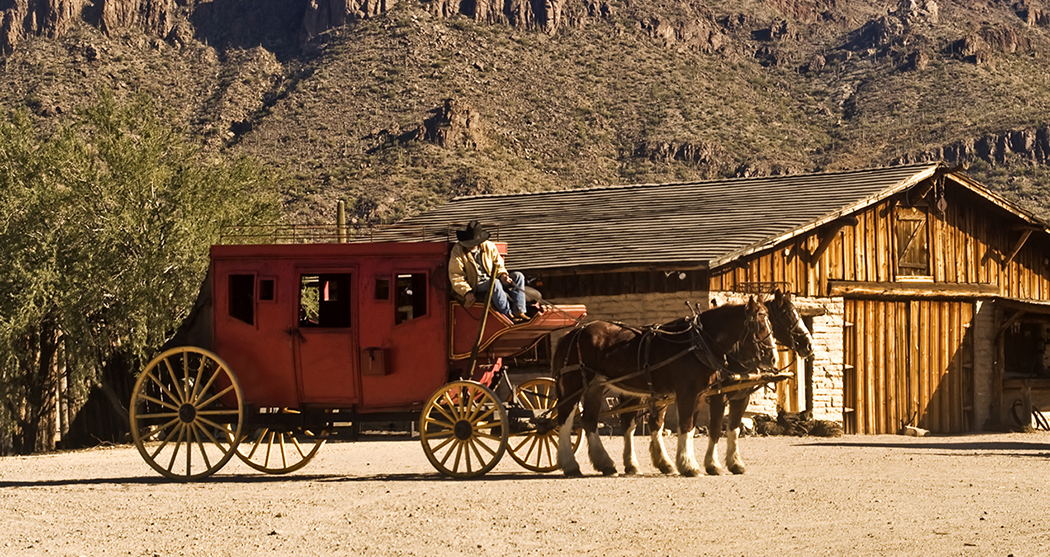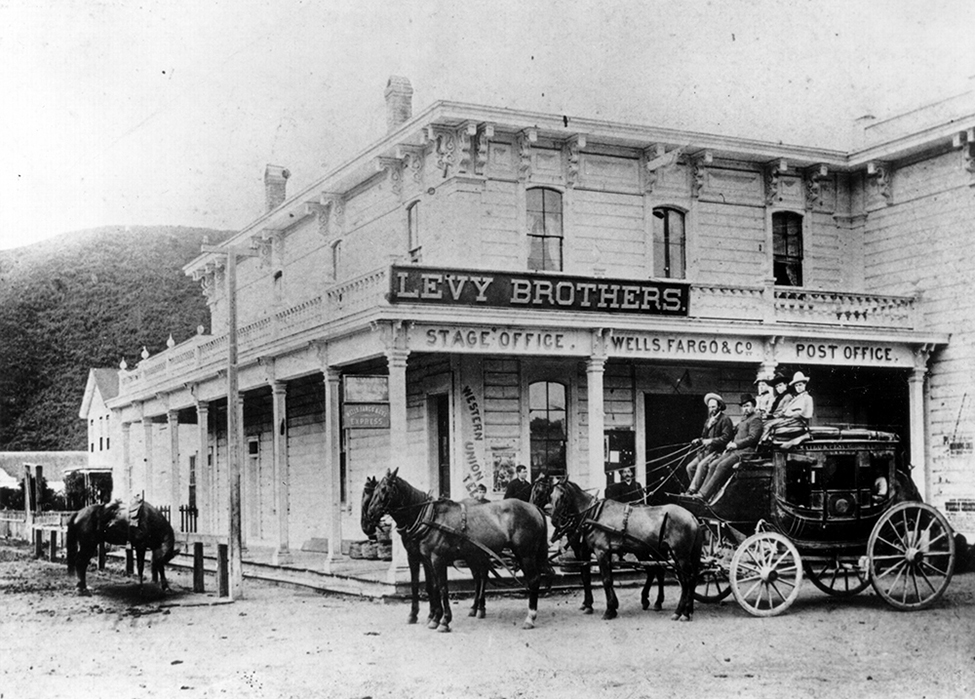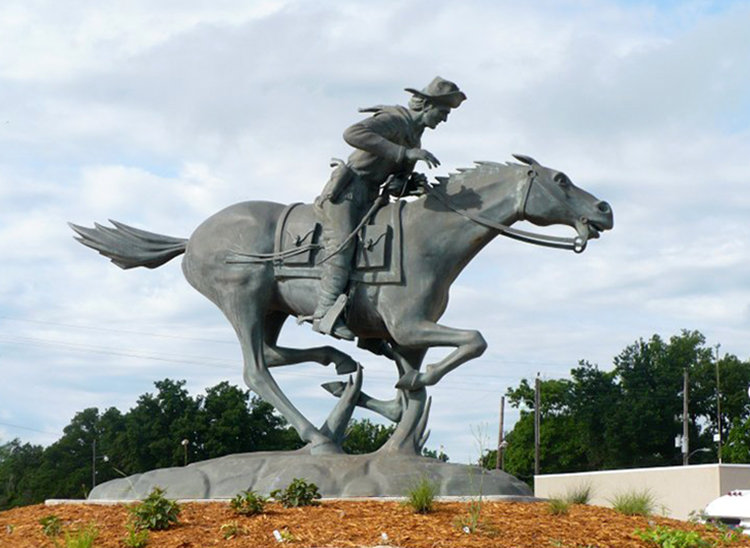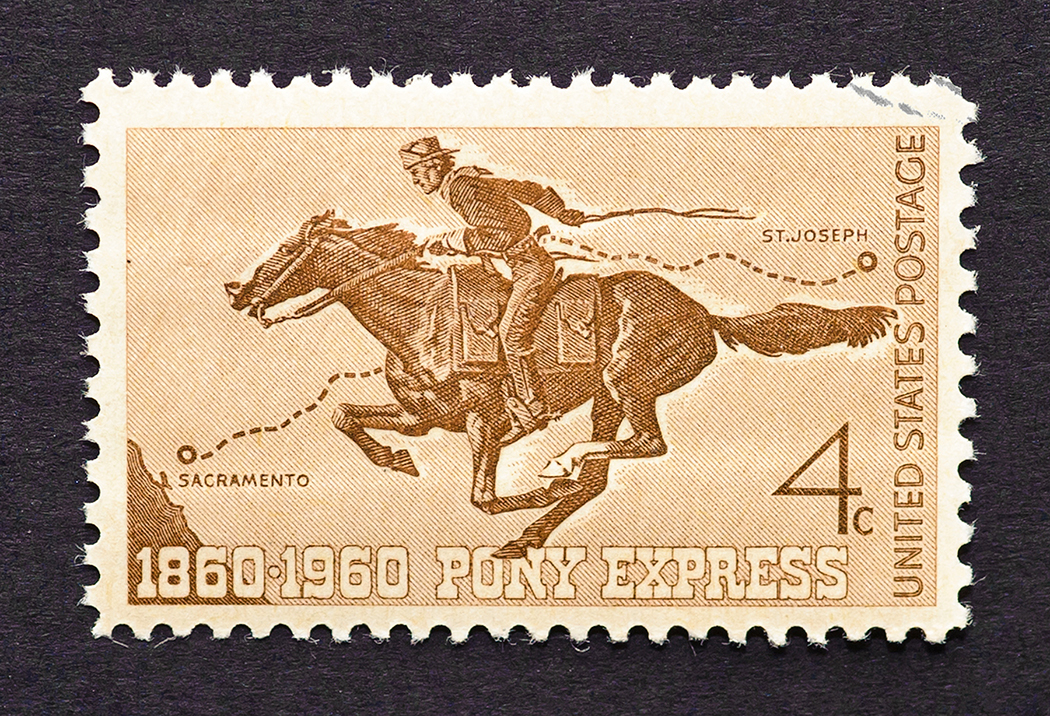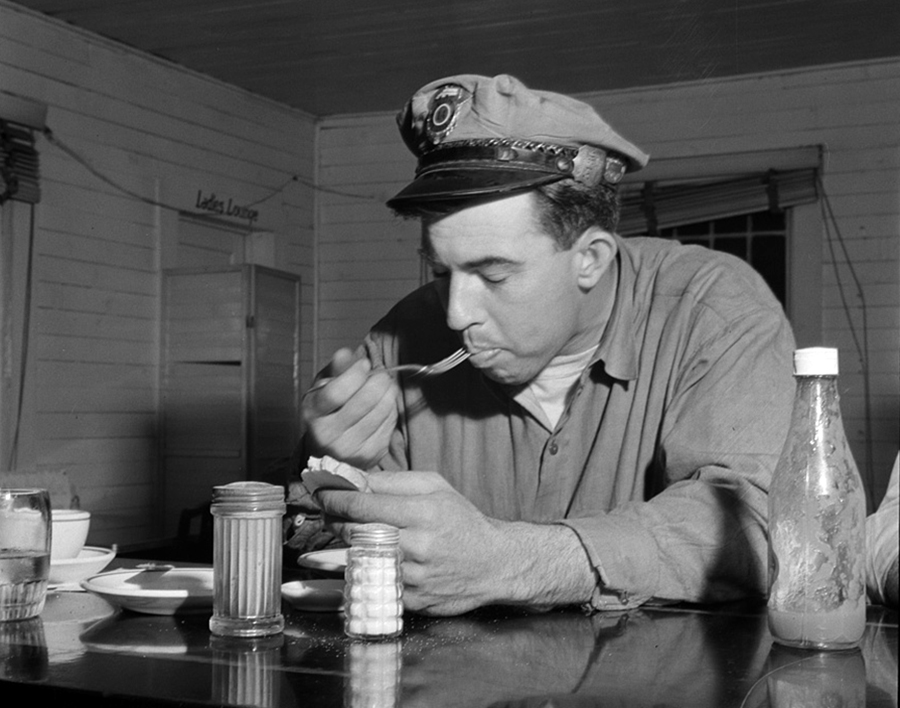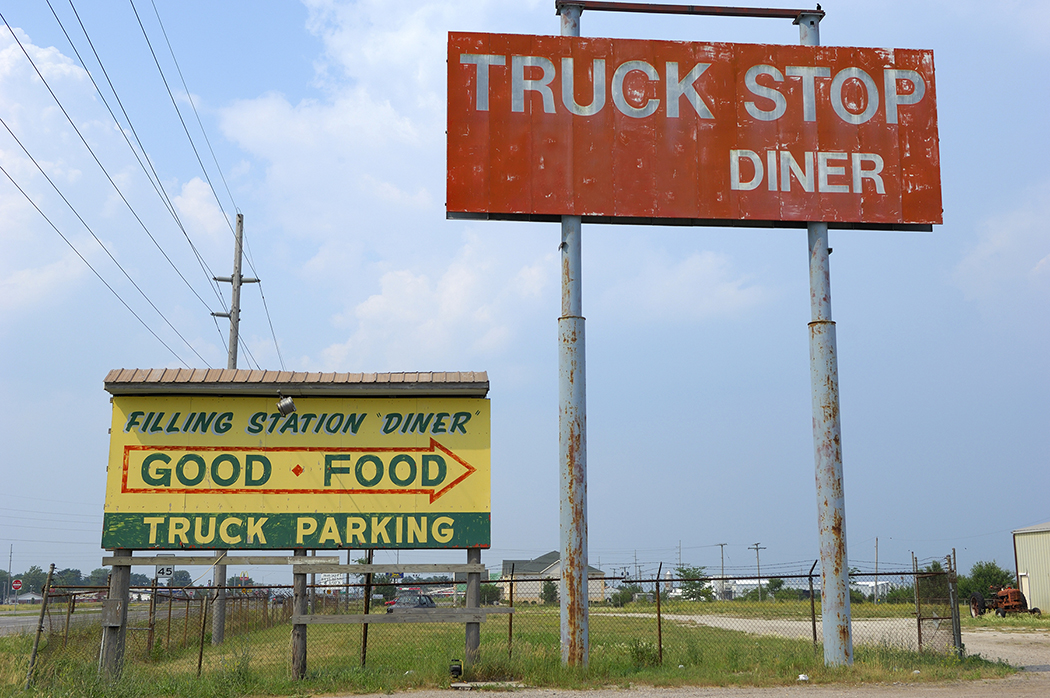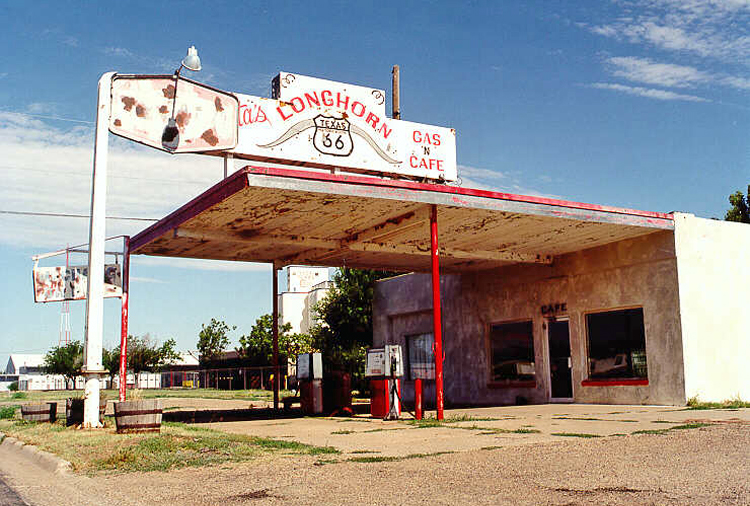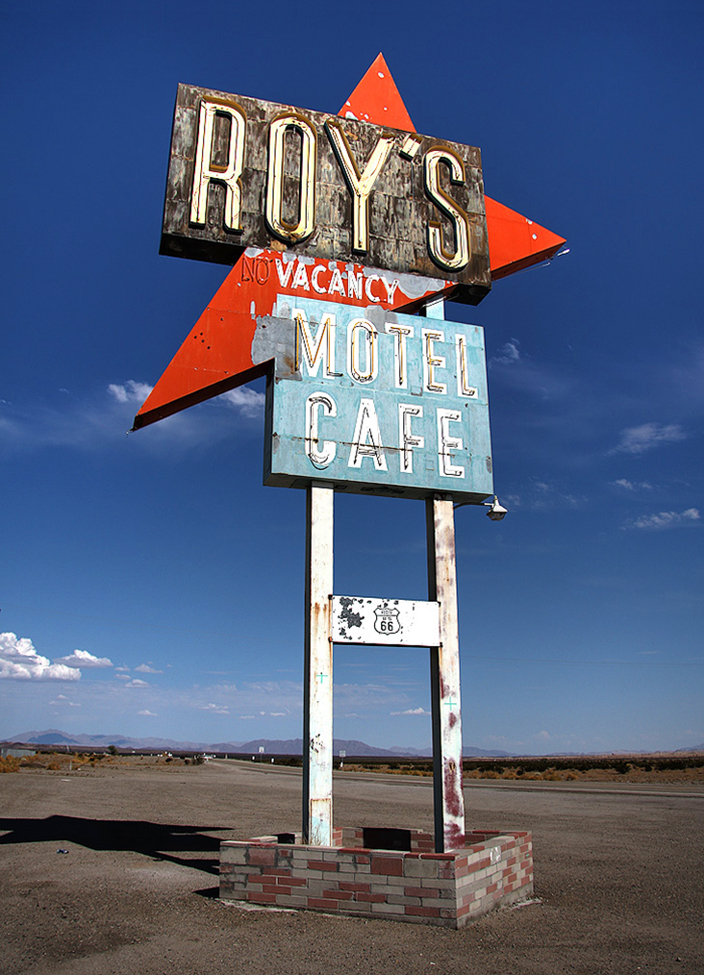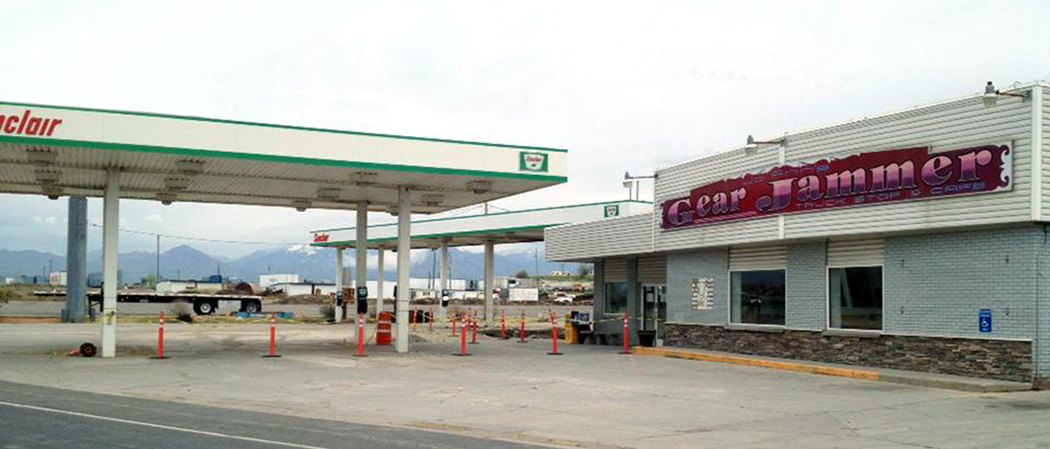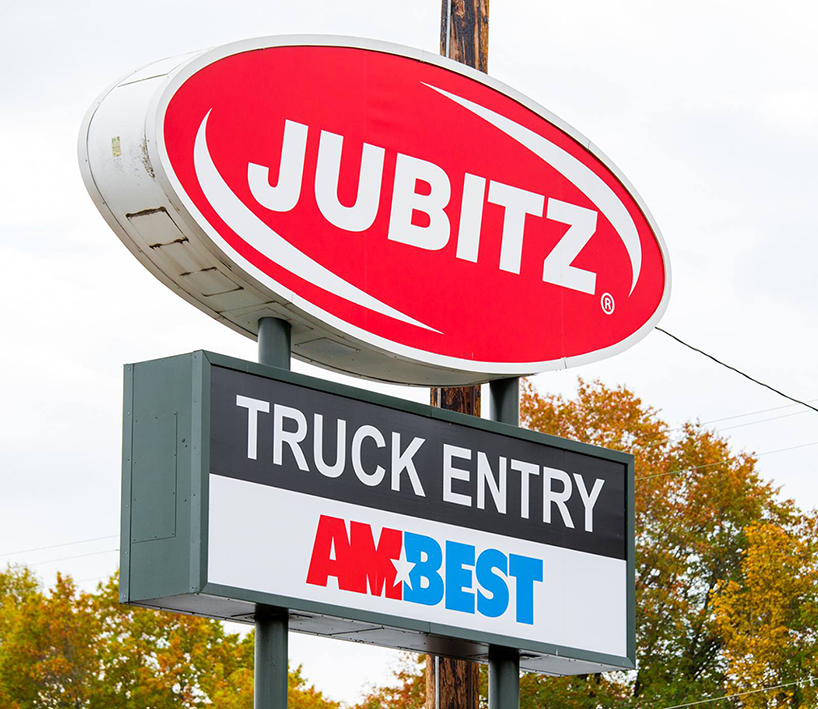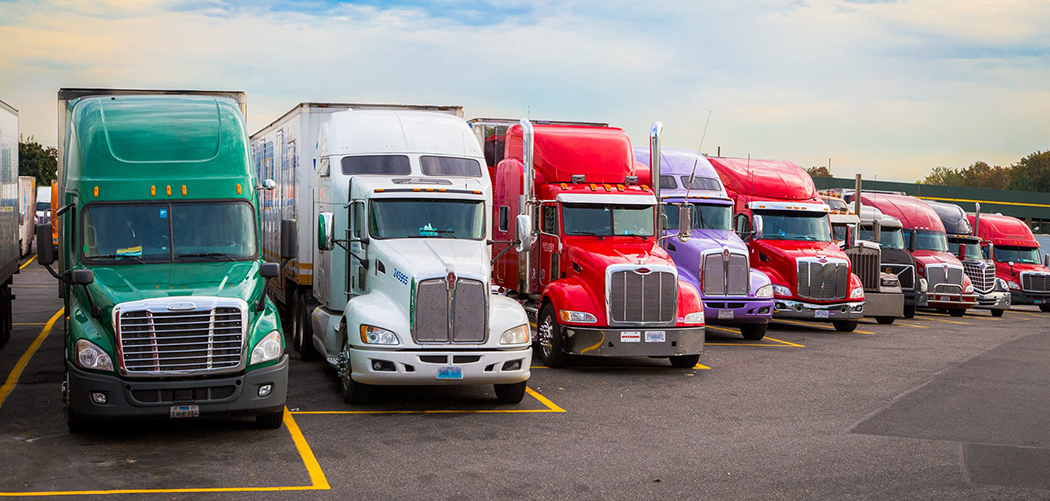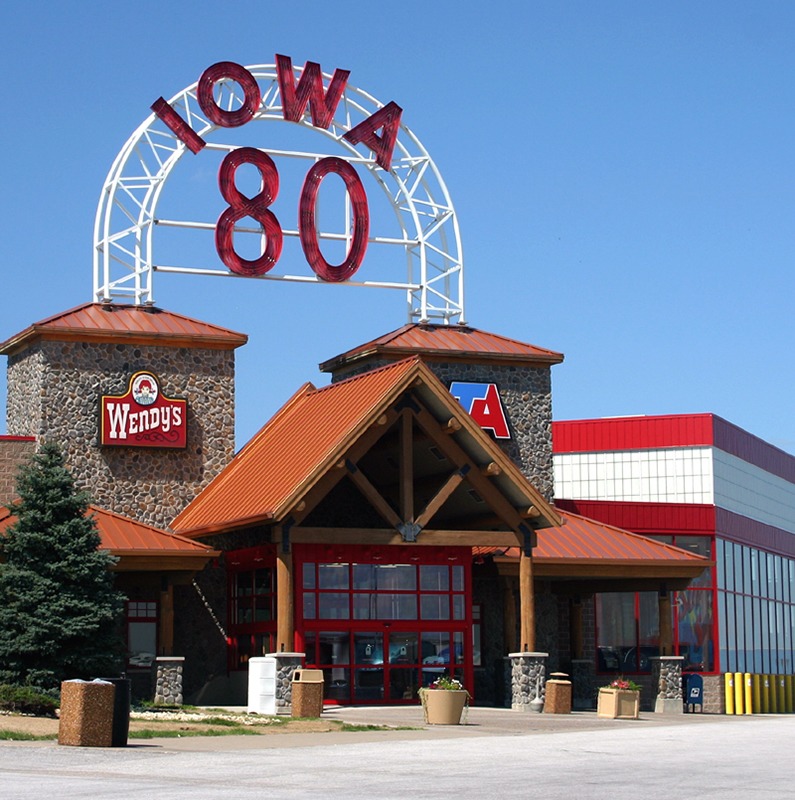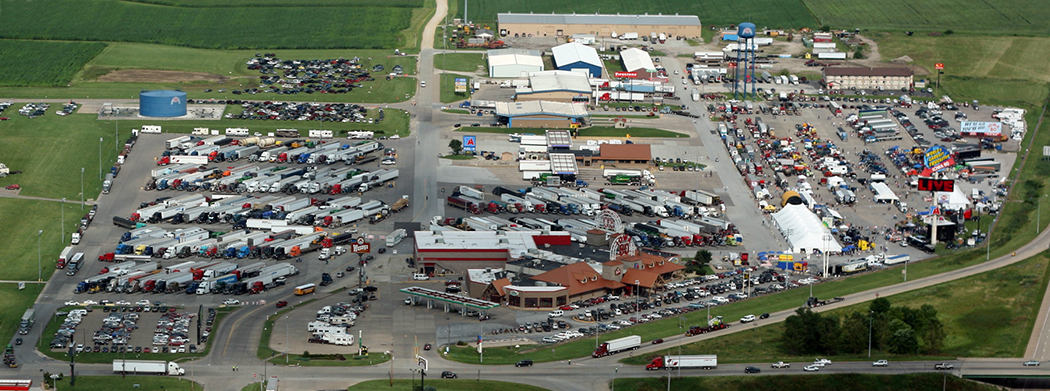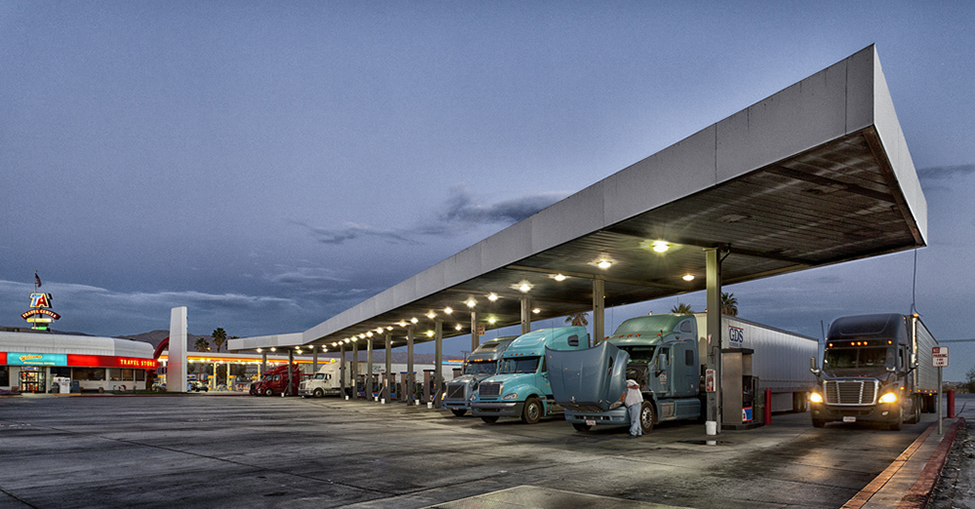The modern-day travel plaza with a movie theater, food court and gym has its roots in the Old West. It can be traced back to the famed Pony Express mail delivery and the stagecoach lines which brought passengers, freight and mail out to the American frontier.
For as long as Americans have been crossing the country, they’ve needed places to rest, refuel and get something to eat. For Pony Express riders who, in 1860, began carrying saddlebags of mail from St. Joseph, Missouri, out West to Sacramento, California, the stops (way stations) were little more than places to swap horses along the 2,000-mile trail.
Because they could carry up to nine passengers, stagecoaches, which reached their peak in the 1860s, needed to be a bit more hospitable. Stagecoach stations were about 12 miles apart, and the nicer ones offered a hot meal and overnight lodging. Soon, the horses gave way to railroads, then the internal combustion engine. As the cars grew more powerful and drivers ranged farther from home, there grew a need for places for them to eat, refuel and rest.
At first, these “rest stops” were little more than gas stations with diners attached, but truck stops really came into their own in the 1960s after the Federal Aid Highway Act launched construction of more than 40,000 miles of interstate highway. Mom-and-pop stops gave way to the big franchises, and services which had been spread among a cluster of buildings, were now consolidated under single, ever-growing roofs.
Truck stops began evolving into travel plazas in the 1980s as operators pursued four-wheelers and RVs, along with truckers. Corporate ownership did their best to scrub the sites of the seamy images truck stops once had and began adding extra features such as gift shops, movie theaters and more. Though the corporatization of the travel plazas has resulted in a certain sanitized sameness, there are still some truck stops out there that have become destinations purely for their size or kitschy appeal.
South of the Border is a 67-year-old Mexican-themed stop on I-95 in Hamer, South Carolina (at the border of South and North Carolina) which features all sorts of attractions. South of the Border, known for their amusing billboards on I-95, features a reptile lagoon, Pedroland Amusement Park, Sombrero Tower, six restaurants and several unique shopping options. It also has a motel onsite, as well as a campground. This place is more than just a quick stop, for sure.
Iowa 80 Truckstop is dubbed as “The World’s Largest” and opened in Walcott, Iowa in 1964. Sprawling out over more than 600 acres, there are many restaurants, a trucking museum, dentist, barber shop, chiropractor, movie theater, a truck wash, and a huge chrome shop. Each year, since 1979, they have hosted a large Trucker Jamboree in July, with all sorts of fun things to see and do, to celebrate and show appreciation to their customers – the American trucker.
Out West, Jubitz Truck Stop has been providing drivers, fleets and local businesses with superior hospitality, entertainment, travel and fueling services since 1952. Located just off I-5 at Exit 307 near Portland International Airport, Jubitz has grown from a local fuel stop to a nationally-recognized Portland icon. While there, you can enjoy a drink and do line dancing in the Ponderosa Lounge, catch a movie at the Jubitz Cinema, or enjoy a classic American meal in the 24/7 Cascade Grill – one of Portland’s best home-style restaurants. If you need a room, the Portlander Inn will take good care of you, and if you want to see some cool old trucks, check out the Jubitz Showroom (sponsored by the Pacific Northwest Truck Museum). And, if you are looking for your free copy of 10-4 Magazine, they have it!
But, as the big chains continue to grow, many of these older truck stops are fading away. As truckers, you see all the abandoned places along the interstates that were once bustling and brimming with activity that are now sitting silent, littered with tumbleweeds, peeling paint, and falling-down signs. It’s sad, but progress marches on. But not everyone wants a “big” experience – some just want to get some food and fuel and get back out on the road!
Owner operator Thomas Miller said the price of fuel is the biggest factor when considering where to stop. The RoadPro Pro Driver Council member said he also likes to stop as close to his shippers and receivers as possible, and that adequate parking is a must. Healthy food options are a plus, but he doesn’t like the trend toward reserved parking. “A driver can’t always predict exactly where he is going to be at the end of his day,” Miller said. “I find it incredibly irritating to arrive and the only spaces left are paid reserved spots – and those are gone, too. I do a lot of my own cooking so food doesn’t play a big role,” he said. “Amenities such as showers, TV rooms and laundry facilities are certainly a plus, for me.”
So, whether you are looking to stop and have some fun or just stop and get business done, there are truck stop options out there for everyone. Who would have ever believed that a lone rider on a horse, carrying mail across the country through hostile territory, would spurn such an enormous and lucrative industry that now services millions of travelers each and every year!
TRUCK STOP TIMELINE
1858 – Wells Fargo forms Overland Mail Co. to deliver mail by stagecoach between St. Louis and San Francisco. Stages stop at way stations to change horses.
1860 – Pony Express begins operating between St. Joseph, MO and Sacramento, CA. Riders change horses at stops along the way periodically.
1898 – Semi-truck invented.
1926 – Route 66 established.
1956 – Federal Highway Interstate Act signed into law, funding construction of the interstate highway system.
1958 – First Pilot Truck Stop opens in Gate City, VA.
1964 – Love’s is founded in Watonga, OK.
1968 – Flying J is founded in Ogden, UT.
1972 – Truckstops of America, now TravelCenters of America, is founded.
1975 – Petro is founded.
2007 – TravelCenters of America acquires Petro.
2010 – Pilot acquires Flying J.
TRUCK STOP FUN FACTS
2,500 – Number of truck stops in the U.S., defined by National Association of Truck Stop Operators as anywhere with at least one shower, 15 parking spaces and diesel fuel for sale.
6,000 – Number of locations that sell diesel fuel, but don’t have other amenities.
950 – Number of overnight truck parking spaces at Iowa 80 Truckstop – the largest truck stop in the country.
500 – Number of overnight truck parking spaces at Florida 595 Truck Stop in Davie, FL.
325 – Number of overnight truck parking spaces at Jubitz in Portland, OR – the biggest stop on Interstate 5 out West.

